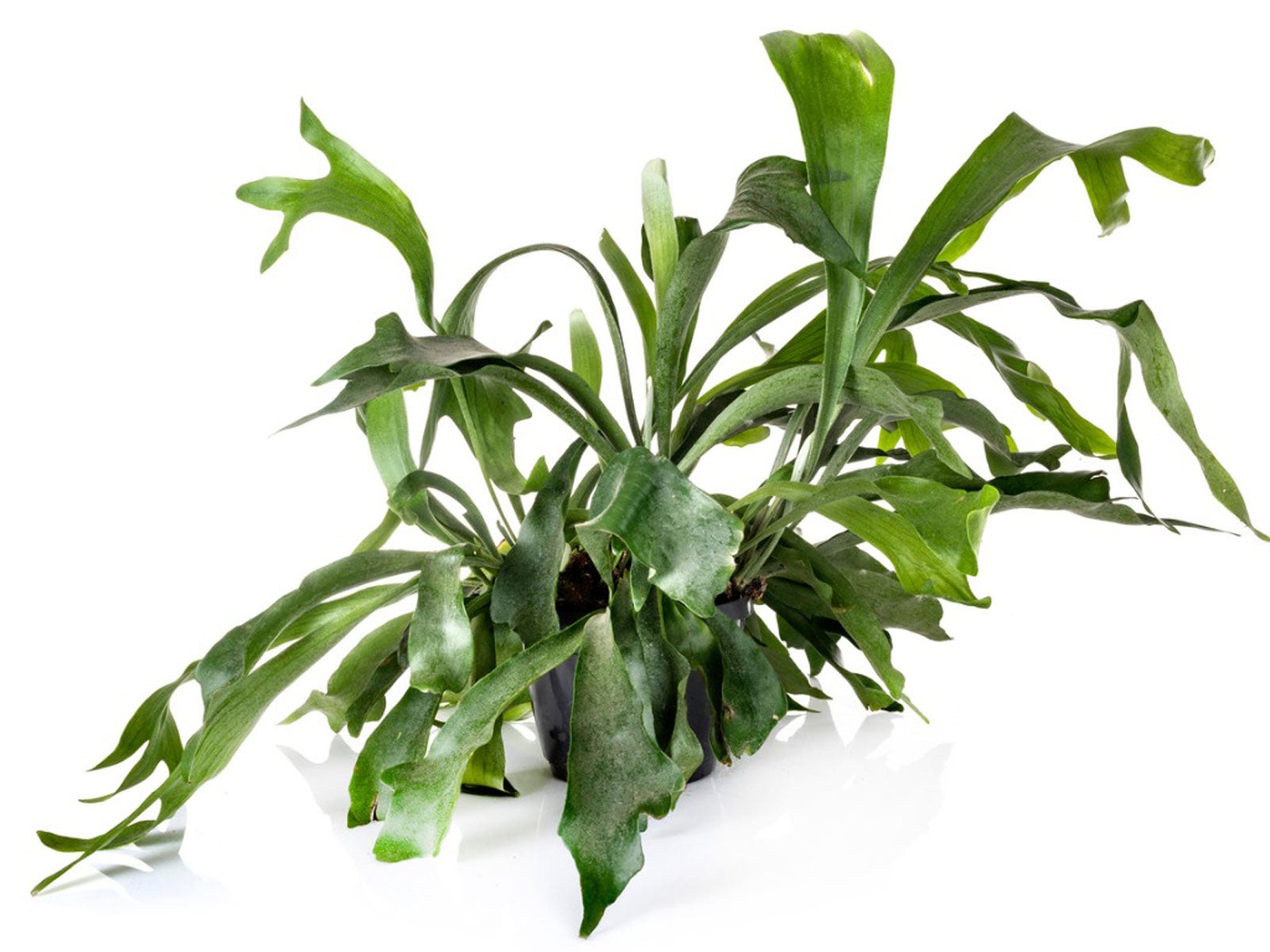Staghorn Fern Information And Care: How To Grow A Staghorn Fern


Staghorn ferns (Platycerium spp.) have an out-of-this-world appearance. The plants have two types of leaves, one of which resembles the horns of a large herbivore. The plants grow outdoors in warm-season locations and indoors elsewhere.
Mounted or in a basket is how to grow a staghorn fern, because they are epiphytic, growing in trees generally. Staghorn fern care relies on careful light, temperature, and moisture monitoring.
Staghorn Fern Information
There are 17 different species of staghorn fern (Platycerium alcicorne) - which in addition to common staghorn fern, go by a number of other common names that include elkhorn fern and antelope ears.
Each one has antler-like foliage as well as a flat, basal leaf. The flat leaves are infertile and turn brown and papery with age. They overlap onto a mounting surface and provide stability for the fern. The foliar fronds may droop or be erect, depending upon the variety of fern.
Staghorn ferns produce spores as reproductive organs, which are borne on the edges of the lobed, antler-type fronds. They do not get flowers and they are generally not rooted in soil.
How to Grow a Staghorn Fern
Growing staghorn ferns is easy. If they get low to medium light and moderate moisture, they will thrive. In fact, whether grown indoors or outside, provide moderate moisture and a humus-rich medium when growing staghorn ferns. Outdoor plants should be located in partial shade or low light conditions for the best growth, while indoor plants need bright indirect light.
Staghorn ferns are usually grown mounted on a piece of wood or in a basket. They will need a little mound of peat, compost, or another organic matter piled up under the plant. Tie the plant onto the growing medium with pantyhose or plant strips.
Gardening tips, videos, info and more delivered right to your inbox!
Sign up for the Gardening Know How newsletter today and receive a free copy of our e-book "How to Grow Delicious Tomatoes".
Growing Staghorn Ferns from Pups
Over time the fern will produce pups that will fill in around the main plant. Ferns don't produce seeds like most plants, so the best way to start a new staghorn fern is from its pups. Use a sharp, sterile knife to cut the pup from the parent plant. Wrap the end of the cut in damp sphagnum moss and tie it onto a piece of wood or bark loosely. Provide the same care of staghorn ferns that you would for an adult fern.
Care of Staghorn Ferns
Care of staghorn ferns relies on careful humidity, light, and temperature control. The ferns can live many years with good care and will get several hundred pounds in their natural habitat. Homegrown ferns are generally much smaller but they can be in the family for decades.
Good staghorn fern care requires frequent watering, but allow the plant medium to dry out in between.
Fertilize them once per month with a 1:1:1 ration fertilizer diluted in water.
The plant is prone to black spot, which is a fungal disease. Do not water over the foliage and minimize humidity indoors to prevent the disfiguring spores.

Bonnie Grant is a professional landscaper with a Certification in Urban Gardening. She has been gardening and writing for 15 years. A former professional chef, she has a passion for edible landscaping.
-
 Looking For Plants To Give You The Soft And Fuzzies? Try These 5 Fuzzy Leaf Plant Options
Looking For Plants To Give You The Soft And Fuzzies? Try These 5 Fuzzy Leaf Plant OptionsLovers of texture, drama, silver foliage and tactile plants will adore these special sensory garden additions. These fuzzy leaf plant options will leave you all aglow
By Susan Albert
-
 Get Ready For A Summer Of Hummers! Grow These Full Sun Hummingbird Plants and Flowers
Get Ready For A Summer Of Hummers! Grow These Full Sun Hummingbird Plants and FlowersIf you’re lucky enough to enjoy a sunny backyard, make sure you are maxing out on your pollinator opportunities and grow these full sun hummingbird plants and flowers
By Tonya Barnett